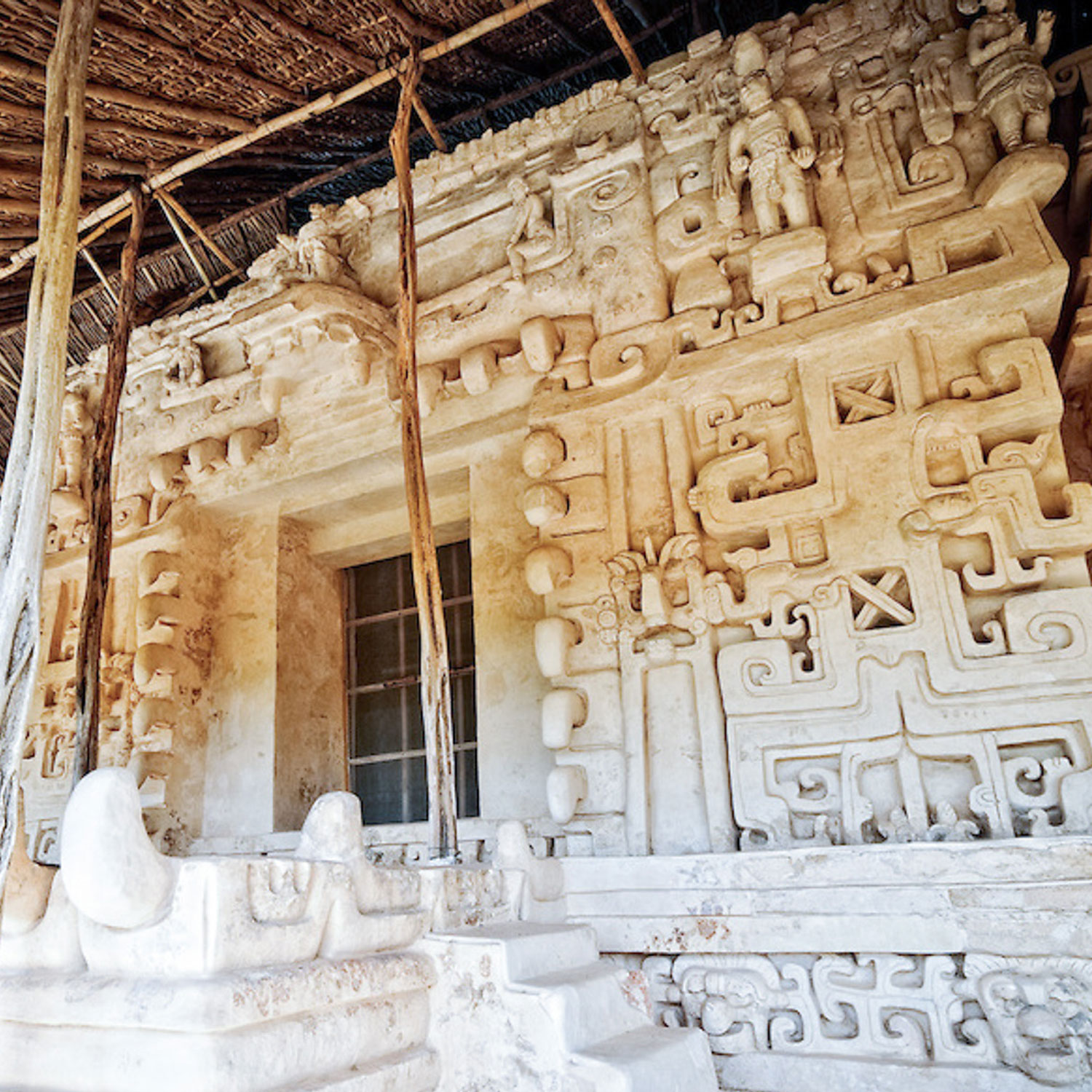The Angels of Ek' Balam: The Riddle of Yucatan's Ancient Maya Ruins
Written by Lydia Jones
Are you a detective at heart? Do you enjoy puzzles? This is one of the best adventures into the unknown in Yucatán.
I have lived and travelled here for five years (after moving from England) so let me be your local guide. Each ancient Maya ruin has a riddle or two, and I just love deciphering them. Read my clues, visit Ek' Balam and tell us your conclusion!
The tomb entrance of king Ukit Kan Le'k Tok' on the Acropolis building is awesome; surrounded by a monster with large teeth and guarded by winged human-like creatures. Angels? But the Maya did not believe in angels. In any case, do spirit beings need wings to fly?
Could these winged creatures have been gods? Priests accompanying the dead king on his final journey? Dancers with winged costumes? Elite warriors who wore eagle's wings? Or possibly the king's ancestors?
Both angels are winged humans. One has a feathered headdress, worn only by rulers and nobles. The other has an oblong skull, intentionally deformed. A clue: this is how royals and nobles demonstrated their social status (an infant's head was put between two boards until it elongated). He also seems to have club feet and hand deformities. Another clue: deformities were a sign of spiritual power. Could they be priests? Yet another clue: deformities were a sign of royalty, the result of inbreeding. The king himself had a cleft lip, shown in the murals in his burial chamber. Could they be his ancestors?
The angels have wide belts, with an X-motif. In Preclassic times, this motif indicated a god. In Classic times the icon appears mostly on the belt of a ruler, representing the divine legitimacy of kingship. Clue: this king founded Ek' Balam and died in Classic times (in 801 AD).
The central figure above the tomb door (headless and missing one arm) is the king. He sits on a throne, dressed as a ball player with a skirt, leg protectors and a belt with a symbol of the severed head used in the ball game. Clue: kings often took part in this ritual conquest of death against the evil lords of the underworld.
Next to the king is someone in the lotus position (a priest or the king himself?) and another one dressed as a ball player. His relative? The king's avatar in his youth? He looks young and beautiful. I have no clue.
The tomb doorway is in the shape of a monstrous mouth, which represents a mountain cave. We can see the teeth from a distance and the eyes just under the sitting king. Why a mountain? The clue is that the Maya considered pyramids to be living mountains (they used the word Witz for both), so they represented them with eyes, mouths and ears. So Witz is the Mountain Monster. It represents the Creation Mountain (Yax Hal Witz), arising from the sea at the moment of creation.
When a king died, he 'entered the waters' of the underworld through the Witz's mouth, where he had to defeat its lords of death. In the lower jaw of the Witz we see watery symbols of the underworld, such as fish and water lilies.
Once he defeated the lords of death, he continued his journey of rebirth up the mountain and the Tree of Life into paradise. The Tree can be seen on each side of the monster's mouth, with the head of a god on its side (possibly the Maize God, who created mankind from maize and added his own blood).
And there is more. The Tree of Life was always portrayed with the Cosmic Bird, Itza Yeh, on top, with outstretched wings, sitting in the sky. We can't see him here, but in his place are the two winged humans. Surely no coincidence, for the Cosmic Bird was the supreme avian being and the feathered Maya nobles denoted themselves as part-bird and thereby celestial.
What's more, in ancient Maya thought, growing maize was interwoven with the Maize God dance. The dancer's costume had long quetzal bird plumes and jade, alluding to the verdant growth of maize. The Maize God dancer could symbolize the resurrection of the deceased ruler as corn growing from the earth.
Here is my own conclusion: the monster represents both the mountain of the Maya creation myth, the source of maize, water, wind, and birthplace of the sun, and the story of the king's resurrection from the underworld.
The sky portrays the ruler who presides over land and sky with his ancestors, shown as winged celestial beings, symbolizing the king's divine ancestry and his resurrection as the Maize god.
What is your interpretation? Visit Ek' Balam and have a go. Can't wait to hear your views.






